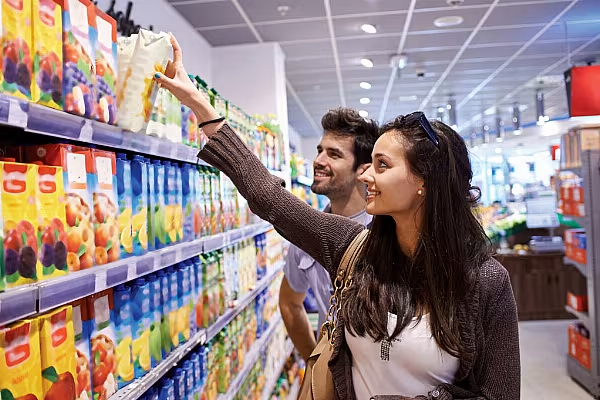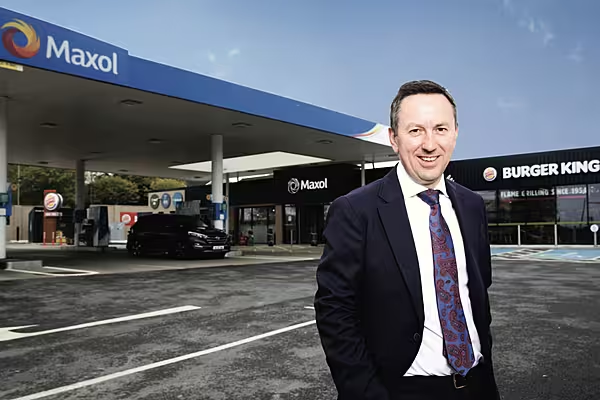Are consumers really falling out of love with big brands? The answer is more complicated than you might think. ESM spoke to John Zealley and Oliver Wright of Accenture.
The emergence of social media, disruptive technologies and a Snapchat-hungry youth market has led many in the consumer goods sector to question the role of big brands in today’s marketplace.
There is a school of thought out there that suggests that the long-standing titans of the industry are fast being usurped by new upstarts – look at how Dollar Shave Club upset the male grooming industry, for example – but according to global management consultancy Accenture, rumours of the ‘death’ of big brands have been grossly exaggerated, with consumer goods firms battling hard to maintain relevance in the eyes of consumers.
Accenture recently launched two reports: Put Your Trust in Hyper-Relevance, which examined ways in which products and services can be ‘more meaningful’ to consumers, and Brands Still Matter: Uncovering the Relevance of Brands in US Food & Beverage (conducted alongside Jefferies and Barkley), which suggests that the market is ‘underestimating the value of brands’ and their ability to adapt to change.
ESM recently spoke to John Zealley, global industry managing director, consumer goods and services, and Oliver Wright, global lead, consumer goods and services strategy consulting, Accenture, to chat about the challenges facing big brands in today’s complex marketplace, and how those that are retaining front-of-mind status are adapting to the needs of their consumer base.
Targeted Products
“First and foremost, consumers are definitely not falling out of love with big brands,” says Zealley. “According to the work we’ve done with Jefferies, consumers are ‘up for grabs’, it’s just that they need brands to be relevant to them. Look at the rise of categories such as craft beers or pet treats, for example – categories where niche, targeted products are thriving.
“That said, it’s about relevance, not loyalty. It’s about listening, but responding with an ‘edge’, to hook in consumers. How do you focus on really motivating your customer base, not just six months down the line, but right now?”
As Wright points out, the rise in prominence of the premium segment, as well as a host of targeted categories, such as locally sourced, organic, free-from, etc., is an indication of how brands need to reinforce their differentiation.
“It’s those brands in the middle that you would say are ‘undifferentiated’ that are finding it more of a challenge,” he says. “You can continue to trade on your legacy position in the market, and continue to do OK, but every brand really should be saying to themselves, ‘How do we maintain the relevance that is required in today’s marketplace, and what part of the market are we going to target?’”
Lessons From Fast Fashion?
Zealley draws a comparison between the current challenge facing the FMCG sector and the rise of ‘fast fashion’, as espoused by Primark, Zara and others.
“If you look at Zara, they renew their proposition something like 60 times a year. They are constantly working out what products are moving fast, what products are moving slowly, but are deeply loved by consumers and everything else,” he explains.
“I think, in the consumer goods market, we’re going to see the emergence of a much faster cycle period, or clock speed, for brands – the rate at which products are launched, sampled, and moved on – which, in turn, will give rise to a more agile model in product development in general. A lot of this will be driven by social media as well, which is very much around short-term management.”
Moving Fast
At the same time, technology should enable brands to act more quickly in terms of determining the dead wood, if any, in their ranges – what Coca-Cola’s James Quincey referred to at the recent Consumer Goods Forum Summit as the “zombies” in a company’s product portfolio.
“Science will enable us to do more tailored propositions,” says Wright. “What we’re seeing is that a lot of organisations are generally waking up to this, albeit slowly. There’s a lot of discussion about how to change the way a company operates, but the action to do that is taking longer than we would have anticipated. In many cases, the gap in capability between disruptors and incumbents is getting bigger, rather than smaller.”
The issue in many firms, Zealley says, is that a lot of corporate structures are built around the old mantra of ‘show me the money’, when they should be focusing on ‘follow the money’, acknowledging that the market has changed and the operational structure needs to change with it.
“A lot of firms have been ‘playing’ in the digital space, hanging with the cool kids, in a way,” says Zealley. “They’ve been making some acquisitions, launching some apps, but that’s not necessarily going to cut it in the long term.
“Everyone is familiar with the concept of the customer journey. You need to know who the customer you are serving is, and where the drop-offs are taking place. You have to be much more scientific, develop a premeditated plan, and put it into action. After all, there is another generation of leaders and businesses coming along that has that already hard-wired into them.”
© 2018 European Supermarket Magazine – your source for the latest retail news. Article by Stephen Wynne-Jones. Click subscribe to sign up to ESM: European Supermarket Magazine.














